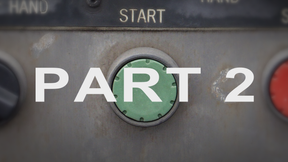BASIC TECHNIQUES OF COLD READING PART 1 OF 2
- willemvandeweert
- 2 jun 2015
- 2 minuten om te lezen

Ever seen a television program or attended a show where a psychic or mind reader was capable of telling very personal details about complete strangers, knowing practically everything about their character, interests, fears and even childhood memories? You have?, then you have witnessed the art of cold reading.
The people that demonstrate these seemingly mind reading capabilities are not actual psychics. They perform the art of cold reading. For someone not familiar with this technique an encounter can be mind-blowing and extremely powerful, yet confusing. The best part about cold reading is that everyone can learn these techniques and they can be very useful in several aspects of daily life.
Cold reading is a technique used by mentalists, psychics, astrologist, fortune-tellers, tarot readers and horoscope writers. The reading is ‘cold’ because it does not depend on any prior information gathered about the client. Instead the cold reader combines careful observations of the clients behavior and characteristics, with set of linguistic strategies. If performed correctly you can tell complete strangers everything about their personality without any prior knowledge. All you need to know are a few simple tricks and techniques which will be covered in this post.
Key basic techniques in performing cold reading are: Observation and Linguistic Strategies.
Observation The observation process contains three steps: observing main characteristics, deduction and pigeon-holing. When a sharp observation has been executed the linguistic strategies can more easily be spot on, increasing the result. The observing characteristics stage is all about carefully observing the clients important characteristics. Some examples which are important to note:
Gender
Age
Ethnicity
Physical; weight, personal hygiene, etc.
Any scars, bruises or signs of diseases
Use of vocabulary
Voice quality (accent, pace, modulation, etc.)
Evidence of addictions like alcohol, smoking or drugs
Clothing, hairstyle, jewelry or other types of body decoration
Any transfers on the clothing that could leave clues (e.g., animal or human hair, mud, oil, or grass)
From these observations a deduction can be made. Making highly probably guesses about a client based on deductions from the observations made, is referred to as the “Sherlock Holmes” technique. Examples of highly probable guesses made based on observations:
Lighter skin tone on the ring finger could indicate a recent separation or divorce
The use of vocabulary and voice is often inferred to education level
Prints on t-shirts or clothing style could leave clues about interests or lifestyle
The third fase of the observation stage is pigeon-holing. A cold reader will generally aim to pigeon-hole, or stereotype, the client into a particular category or person type. The most basic categories are based on age and gender (e.g., teenage females, middle-aged female; elderly man, etc.). These stereotypes can also be made more specific if needed.
When the cold reader has pigeon-holed the client, the reading is then centered around areas stereotypically concerns people in this category, and also around any specific deductions that can be made based on observations of the client. For example:
A mid-teen female is likely to experience difficulties related to insecurity, popularity, peer pressure and boys.
A middle-aged, poorly-dressed man who is rather skinny and has geeky glasses or skin disease, may have low self esteem





















Opmerkingen